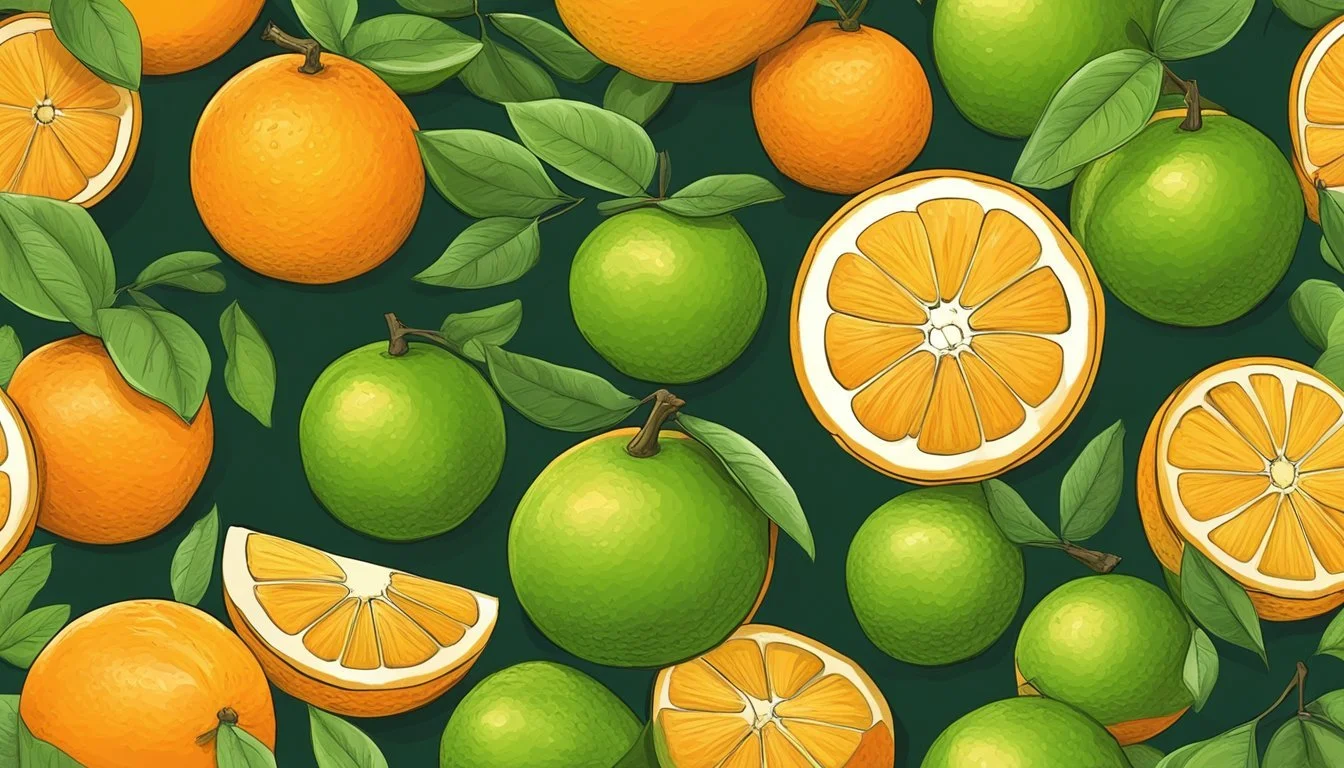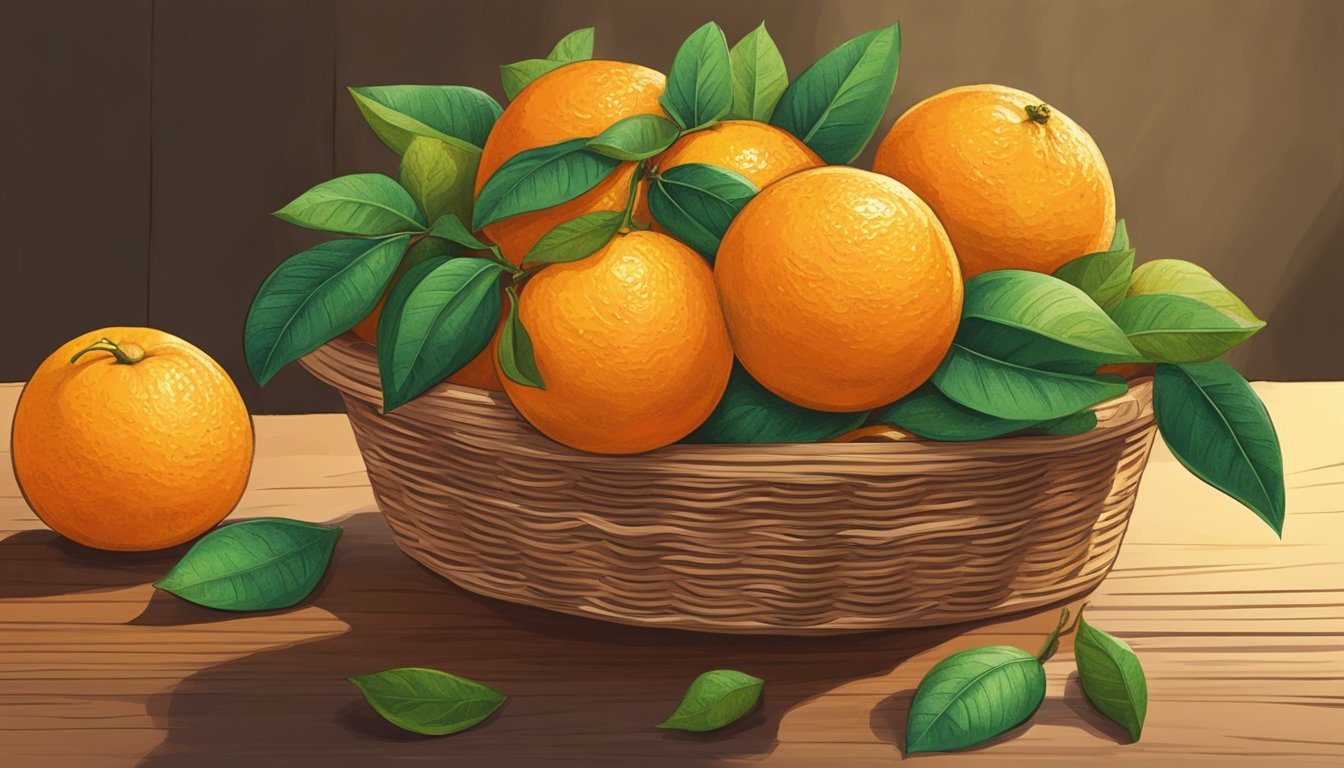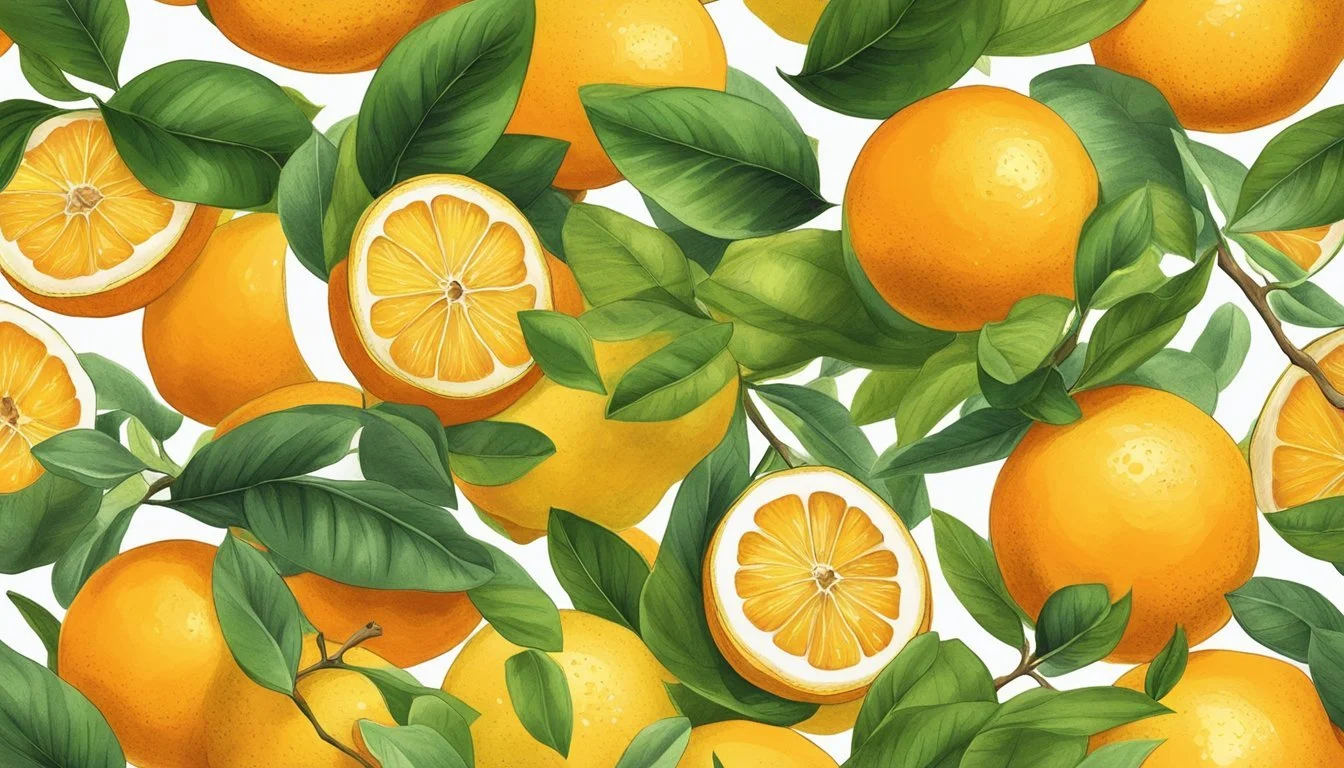How to Tell If Sour Oranges Are Ripe
Your Essential Ripeness Checklist
Knowing when sour oranges are ripe is essential for enjoying their unique flavor to the fullest. Unlike their sweet counterparts, ripe sour oranges can sometimes retain green patches on their skin, making it less intuitive to determine their readiness for consumption. Ripe citrus typically exhibits a bright, consistent coloration, but it’s important to remember that color alone isn't a definitive indicator of ripeness. Sour oranges may undergo "regreening," where the peel reverts to a greenish hue due to temperature variations without affecting the ripeness of the fruit.
The feel of the orange is another good indicator; a ripe sour orange will have a slightly soft texture, giving a little under gentle pressure. Furthermore, a heavier fruit for its size often signals that it’s juicy and at peak ripeness. Though very aromatic, sour oranges are not as sweet as other varieties, which means taste alone may not be the best measure. The aroma near the stem can give some clues about the ripeness, with a sweeter, more citrusy scent indicating a ripe fruit.
Key Takeaways
Ripe sour oranges can retain some green coloring due to regreening.
A ripe sour orange feels slightly soft and is heavier, signaling juiciness.
Smelling the stem end can provide hints about ripeness through its aroma.
Understanding Citrus Ripeness
To gauge whether sour oranges are ripe, one must assess various aspects such as color transition, firmness, and sweetness. The following subsections detail methods to evaluate the ripeness of citrus fruits.
Stages of Orange Ripeness
Sour oranges pass through multiple stages of ripeness, beginning from a hard, green, and bitter state, progressively softening and sweetening. Early in the cycle, the fruit is firm and offers resistance to pressure, indicating immaturity. As the fruit matures, its exterior color shifts, and internally, the sugar content increase marks its journey towards peak ripeness.
Ripening Process of Citrus Fruits
Citrus fruits ripen on the tree through a complex process influenced by environmental factors such as temperature. Unlike some fruits, citrus does not continue to ripen once harvested. The chlorophyll in the peel breaks down due to temperature changes, leading to a color shift from green to orange.
Visual Indicators for Ripeness
Visual clues are crucial for assessing the ripeness of sour oranges. The skin should exhibit a consistent orange hue, although some may still show patches of green due to 'regreening' in warm climates. This should not be mistaken for under-ripeness as the color is not always a reliable indicator of the fruit's internal sweetness or acidity levels.
Color Transition: Look for a uniform orange color or note that some green does not always signal immaturity.
Surface Characteristics: A smoother, thinner skin may indicate greater ripeness.
Tactile Methods to Determine Ripeness
Touching the fruit can provide additional information about its ripeness. A ripe sour orange should yield slightly to firm pressure, signifying a juicy and sweet interior.
Firmness: Gently squeeze the fruit; a slight give is ideal.
Weight: Heft the orange in hand; a heavier fruit for its size often contains more juice.
The Anatomy of Sour Oranges
Sour oranges, distinct for their robust flavor, are a unique citrus fruit with a rich heritage and versatile applications in cooking and beyond.
Varieties of Sour Oranges
Sour oranges are primarily categorized into a few main varieties, each with its unique characteristics. The Seville orange, also known as bitter orange, is one of the most well-known types. It boasts a thick, dimpled skin and is highly regarded for its use in marmalade and culinary endeavors. Another variety, the Bergamot orange, is less consumed as a fruit but highly valued for its fragrant oil, which is used in perfumery.
Seville Orange: Prominent in European cuisine, intensely tart with a rough, thick skin.
Bergamot Orange: Known for its essential oil used in Earl Grey tea and fragrances.
Understanding Sour Orange Aroma
The aroma of sour oranges is a defining characteristic that sets them apart from their sweet counterparts. The sour orange aroma can be characterized by an intense citrus scent with a complex, spicy undertone that is more pronounced than in sweet varieties. This bouquet is due to the essential oils present in the fruit's rind, which contain various volatile compounds that contribute to its distinctive scent.
Seville Orange: Possesses a rich, bittersweet olfactory profile.
Bergamot Orange: Features a highly aromatic and slightly floral fragrance.
Sour oranges' aroma not only defines their use in culinary applications but also determines the quality of essential oils derived from them, which play a significant role in flavoring and fragrance industries.
Harvesting Sour Oranges
Harvesting sour oranges at the right time ensures their best quality for consumption and processing. Knowledge of the seasonality and proper techniques is essential for successful harvesting.
Optimal Harvesting Season
Sour oranges, a type of citrus fruit, typically reach their peak ripeness during the winter months. The cool weather helps to accumulate the necessary acidity and flavor profile desired in sour oranges. One should observe the fruit's color change to a bright orange hue, which signifies they are ready to be harvested.
Techniques for Harvesting Citrus Fruit
Citrus fruits, including sour oranges, must be harvested with care to avoid damage to both the fruit and the tree. The following steps outline the best practice for harvesting sour oranges:
Preparation: Prepare clean pruning shears or a sharp knife.
Cutting Technique: Make a clean cut close to the stem, leaving a small portion attached to the fruit.
Handling: Gently remove the fruit to prevent any pulling or twisting that can injure the tree.
Please note that the fruit should not be pulled off the tree, as this action can be harmful. Additionally, it is advised to avoid harvesting the fruit by shaking the branches, as this can cause both ripe and unripe fruit to fall and sustain damage.
Tasting and Culinary Uses
In the realm of sour oranges, the ripe fruit offers a distinctive flavor ideal for various culinary applications, from marmalades to marinades.
The Flavor Profile of Ripe Sour Oranges
Ripe sour oranges are known for their robust and nuanced taste. They present a distinctive bitter and tart profile, with a fragrant aroma. Unlike sweet oranges, the sour variety maintains a higher level of acidity, which is pivotal in many culinary creations. The acidity diminishes slightly as the fruit matures, and the skin color deepens to a rich orange hue, signaling readiness for consumption and use in recipes.
Cooking and Baking with Sour Oranges
Cooking: Sour oranges are a versatile ingredient in the kitchen. They are a staple in various marinades and sauces, imparting a zesty kick to savory dishes. The juice works exceptionally well with poultry, infusing it with flavor and acting as a tenderizer.
Marinades: Ideal for chicken or pork; mix with herbs for enhanced flavor.
Sauces: Perfect as a base for both sweet and savory sauce preparations.
Baking: The unique flavor of sour oranges is also an asset in baking and desserts. The tang of the sour orange juice and zest can elevate a simple cake or pastry to a refreshing treat with complex flavors.
Marmalade: Sour oranges are a classic ingredient in marmalade, offering a bittersweet twist.
Desserts: Incorporate into citrus curds or use as a garnish on cakes and tarts.
The use of sour oranges in the kitchen transcends the traditional, inviting culinary enthusiasts to explore a world of vibrant and tangy delicacies.
Selecting the Best Sour Oranges
Selecting the finest sour oranges requires attention to their external features, a taste test for their flavor profile, and knowledge of where to purchase them to ensure quality.
Assessing External Characteristics
When choosing sour oranges, one should first examine the skin and peel for signs of ripeness and health. The skin should be firm and unblemished with a bright, uniform color. Small pores on the rind indicate a thicker skin, which is common in sour orange varieties. It's also essential to check for the absence of mold, which may manifest as discolored, fuzzy spots. While a little green on the skin is generally acceptable, it should not cover the majority of the orange.
Performing a Taste Test
For the most definitive assessment of ripeness, one should conduct a taste test. The flesh of sour oranges should impart a bold, tangy flavor with a touch of sweetness underlying the sourness if indeed they are ripe. The juicy nature of the fruit should be evident, and the sour oranges should be moderately easy to peel, with the pith—the white layer between the rind and flesh—being thin. Overly sour taste or lack of juiciness may suggest that the fruit needs more time to ripen.
Where to Buy Quality Sour Oranges
Purchasing sour oranges from reputable sources ensures a higher likelihood of quality. Farmers' markets, specialty produce stores, and trusted orchards are favored options. These venues often allow for direct sampling or offer guarantees of freshness. When buying, it is beneficial to inquire about the presence of seeds and whether the sour oranges have a good balance of zest to flesh, a factor important for culinary uses.
Storing Sour Oranges
Properly storing sour oranges can significantly extend their shelf life and preserve their quality. This section will cover both short-term and long-term storage solutions and best practices for maintaining freshness.
Short-Term and Long-Term Storage
Short-Term Storage:
At Room Temperature: Sour oranges can be stored on the counter at room temperature if they will be used within a week. The ideal temperature for room storage is between 60°F and 70°F.
In the Refrigerator: For storage lasting up to two weeks, refrigeration is recommended. Place the oranges in the crisper drawer to maintain an appropriate humidity level.
Long-Term Storage:
Freezing: For keeping sour oranges beyond two weeks, freezing the fruit is a viable option. The oranges should first be juiced or segmented, then frozen.
Juice: Strain the juice and freeze in ice cube trays, then transfer to a freezer-safe container or bag once solid.
Segments: Place segments on a parchment-lined baking sheet without touching, freeze until firm, then store in a freezer-safe bag or container.
Best Practices for Preserving Freshness
Consistent Temperature: Maintain a consistent temperature when storing sour oranges in the refrigerator to prevent spoilage.
Proper Packaging: Use airtight containers or mesh bags that allow for air circulation to store oranges in the refrigerator.
Avoid Moisture: Keep sour oranges dry during storage to reduce the risk of mold. If washing before storage, ensure they are thoroughly dried.
Check Regularly: Inspect stored sour oranges regularly for signs of over-ripening or spoilage to remove any affected fruit and prevent it from impacting the rest.
Nutritional Information
Sour oranges, also known as Seville oranges, provide notable nutritional value, primarily through their vitamin C content and caloric composition.
Vitamin C and Health Benefits
Sour oranges are a rich source of vitamin C, an essential nutrient for immune system function, skin health, and the healing of wounds. One large sour orange typically contains about 109% of the daily recommended intake of vitamin C. This antioxidant plays a role in neutralizing free radicals and may reduce the risk of chronic diseases.
Caloric and Sugar Content
In terms of energy provision, sour oranges offer a modest calorie count. A typical sour orange contains:
Calories: Approximately 60-80 kcal
The sugar content in sour oranges is lower compared to sweet oranges, making them slightly more calorie-efficient. However, the exact sugar content can vary depending on the specific sour orange variety and its ripeness at harvest. Sour oranges contain:
Sugar: Generally ranges from 8-10 grams per fruit
These figures are approximate and can fluctuate based on size and growing conditions of the fruit.
Beyond the Fruit
While sour oranges are unique in their taste and uses, they share the citrus family tree with a variety of other fruits, each with its own applications. This section will explore related citrus fruits and reveal how by-products of sour oranges can be utilized.
Other Citrus Fruits Related to Sour Oranges
Citron (Citrus medica): Known for its thick peel and minimal juice, citron is primarily used for its zest or candied peel rather than its sour juice.
Mandarin (Citrus reticulata): Including types such as tangerines, mandarins are sweeter, with easy-to-peel skin, often enjoyed fresh or in fruit salads.
Pomelo (Citrus maxima): The largest citrus fruit, pomelo has a thick but aromatic rind, with sweeter flesh than sour oranges.
Tangerine: A variant of mandarin, this fruit is distinguishable by its deep orange color and sweeter flavor, commonly consumed as a fresh snack.
Grapefruits (Citrus × paradisi): Characterized by their large size and range from sweet to sour taste, grapefruits are primarily eaten fresh or juiced.
Kumquats (Fortunella): Small and oval, kumquats are eaten whole, rind and all, for a burst of sweet and tart flavors.
Meyer Lemon (Citrus × meyeri): A cross between citrons and mandarins, Meyer lemons are less acidic, adding subtle flavor to dishes and beverages.
Persian Lime (Citrus × latifolia): Larger and less tart than key limes, Persian limes are versatile, used in culinary dishes and drinks alike.
Key Lime (Citrus × aurantiifolia): Smaller and more aromatic with a strong acidic flavor, key lime is a favorite in baking, particularly in the famous key lime pie.
Calamansi (Citrus × microcarpa): A hybrid between kumquats and mandarins, calamansi is tangy and slightly sweet, often found in Filipino cuisine.
Limes: Including varieties like the Persian lime and key lime, limes are essential for their zest and juice in many recipes from cocktails to marinades.
Uses of Sour Orange by-products
After the harvest of sour oranges, the by-products such as the peel and essential oils can be processed for multiple uses:
Essential Oils: Extracted from the peel, it's used in aromatherapy, cleaning products, and as flavoring agents in food and beverages.
Animal Feed: Leftover pulp after juice extraction can be repurposed into nutritious animal feed.
Culinary Ingredients:
Peel and Zest: Often candied or used as flavoring in cooking and baking.
Marmalade: Sour orange peel is a key ingredient in this tangy spread.
Cosmetics and Skincare Products:
Peel extract is incorporated into products for its fragrance and potential antioxidant properties.
Oil is employed for its citrus scent and nourishing qualities.
In conclusion, the sour orange and its citrus relatives are indispensable in culinary arts and industrial applications, highlighting the value of these fruits beyond mere consumption.






